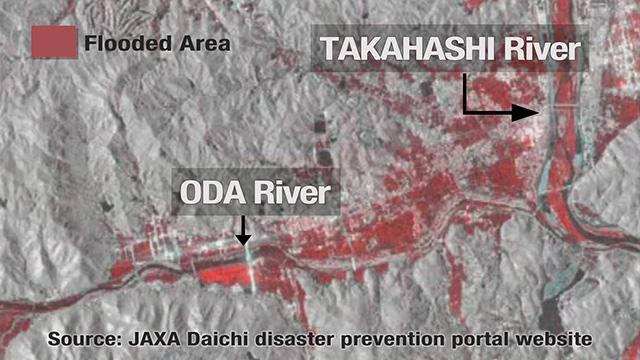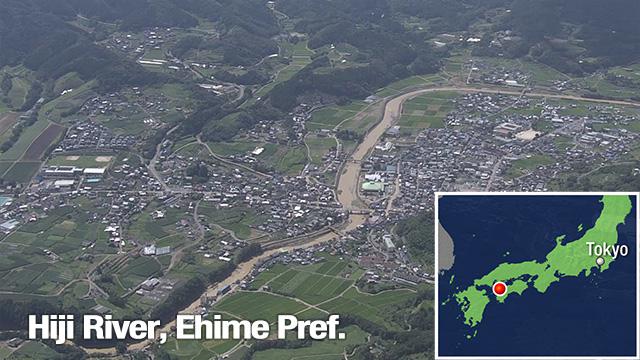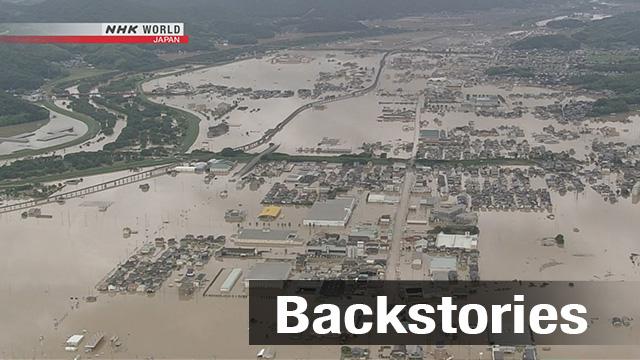Satellite imagery highlights extent of flooding
The Mabi Town, Kurashiki City, Okayama Prefecture, suffered heavy casualties and extensive damage. Many residents were stranded on rooftops due to flooding.
The Japanese space agency, JAXA, compared satellite data of the area from April with data from after midnight July 8th, about 24 hours after flooding was announced. The imagery highlights areas where changes were observed with red dots. The dots are spread out over a stretch of roughly 7 kilometers upstream from where 2 rivers -- Oda and Takahashi -- intersect. The data shows floodwaters covering entire residential areas along the rivers.

Okayama University Professor Shiro Maeno, an expert on river engineering, says he believes the images accurately reproduce the scale of flooding.
He says surging river waters breached levees as tall as a 2-story house, causing a flash flood that spread quickly.
The case of Kurashiki City
In Kurashiki City, Okayama Prefecture, levees along the Oda River collapsed and flooded most of the Mabi Town. Seeing as the river was at risk of overflowing its southern banks, Kurashiki City issued an evacuation order for Mabi at 11:45pm on July 6th.

But the order only targeted areas to the south of the river. Areas to the north, which later became flooded, were deemed to be safe. An evacuation order was issued for the north side nearly 2 hours later, at 1:30am on July 7th. This was an hour after the river had breached its banks.
A city official says they issued the orders as soon as they could. The official says there were other factors to consider besides the water level, which led to the difference in the timing of the order between the north and south.

An expert says it's unrealistic to start evacuating after a levee collapses. He says that as the levee begins to crumble, the river starts flowing in that direction, and the force of the flow further widens the opening, making it difficult to escape.
The case of Ehime Prefecture
Ehime Prefecture suffered deaths due to mudslides and flooding before an emergency rain warning was issued on July 8th.
On July 7th, notices of record hourly rainfall were issued 3 times after roughly 100 millimeters of rain fell near Uwajima City and Seiyo City. Around the same time, the Hiji River, which runs through Ozu City, overflowed its banks.

The emergency rain warning was put in place at 5:50am on July 8th. By that time, 18 people in the prefecture had been killed.
Disaster experts are pointing out that the criteria and timing for the warning, as well as the residents' response, should be examined.
University of Hyogo Associate Professor Reo Kimura says residents outside the warning area could have taken it to mean that where they live is safe, putting themselves in danger.
